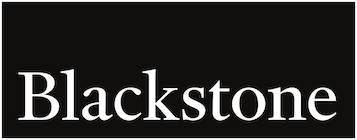Byron Wien: Confronting the Market Setback

By the end of the summer I became convinced that the United States equity market was setting itself up for a powerful post mid-term election rally. The economic fundamentals were strong: unemployment was at a 40-year low and real growth was better than 3%; the Federal Reserve was raising rates, but that was only a noble attempt to creep back to normal levels for the later stages of a business cycle. The yield curve was likely to remain positive, inventories were not excessive and leading indicators were still rising.
Offsetting these positives was market valuation. My model indicated equities were fully priced and sentiment indicators suggested that investors were dangerously optimistic, emboldened by the favorable fundamentals above. The Fed was shrinking its balance sheet and slowly draining the economy of liquidity, the lifeblood of rising equity markets. There were signs that the economy was decelerating. Earnings increases were slowing from a rate of 20% year-over-year in 2018 driven by the tax cut to an estimated 10% year-over-year in 2019. Two traditional drivers of growth, housing and capital spending, had yet to gather momentum, leaving the work of expanding the economy to the consumer and government spending. There were a number of aspects of the Trump administration’s policy agenda, like healthcare and immigration, that were unsettling to investors. In addition, the United States was in conflict with China over tariffs and trade policy.
There were also problems emanating from abroad. China, which had orchestrated a modest slowdown at the beginning of the year to try to reduce the non-performing loans on the books of its banks and shadow banks, had slowed down more than expected and, in response, policy makers had to cut taxes, depreciate the currency, step up fiscal spending and engage in monetary accommodation. European growth had been negatively impacted by Brexit. The rise of populism in Europe had weakened Angela Merkel’s leadership in Germany and boosted authoritarian rule in Eastern Europe. Military conflicts continued in Syria, Yemen and throughout the Middle East. These issues all have an indirect impact on the economic stability of the United States.
For these reasons I thought the equity market would have to go through a correction to improve valuation and sentiment. In October, the sharp decline in the market wiped out all of the gains in the indexes from the beginning of the year. Major investment advisors changed their view of the outlook from positive to negative. Sentiment moved into pessimistic territory. The S&P 500® is only selling at 15.6 times 2019 projected earnings. Conditions became favorable for the year-end rally I had been expecting.
Then the mid-term elections took place. There was nothing really surprising in the outcome. The Democrats seized control of the House of Representatives and the Republicans gained some seats in the Senate. The significance of the shift in Congress can be debated. I expect to see the President begin campaigning for a second term immediately. I also believe it will be hard to get major legislation enacted, but there may be some adjustments made in the tax code and the Affordable Care Act. Both sides recognize the need for improving our infrastructure, but little progress has been made on this front so far in spite of talk of a trillion-dollar program. With the annual budget deficit increasing from $800 billion to $1 trillion because of the tax cut and spending programs already in place, there might not be much enthusiasm among either party for expanding the deficit further.
One hope I have is that the Democratic majority in the House doesn’t waste its time on an impeachment effort or any kind of investigation of President Trump. It would further exacerbate the polarization that already exists in Congress and reduce the likelihood of cooperation on legislation where both sides have a common interest, like infrastructure. The Mueller investigation of Russian involvement in the 2016 presidential election is going to release some of its findings over the next month. I expect some members of the Trump inner circle will be embarrassed by what is revealed, but the President himself won’t be directly impacted. Mueller’s report will be dismissed as a “witch hunt” or “fake news” and only intensify Trump’s reelection efforts. It will have limited market implications. We now have new leadership in the Justice Department. Let’s hope the Mueller investigation is permitted to run its independent course toward completion.
After the uncertainty of elections was removed, markets briefly rallied before the inevitability of a tougher earnings environment in 2019 set in. It seems like the 27%+ year over year earnings gain reported this quarter is being completely discounted by markets as the tougher future comps are dragged into the spotlight. Perhaps companies won’t get any credit for their strong 2018 results because those numbers are viewed as the result of earlier tax cuts and stimulus, and hence “artificial.” But lower corporate tax rates will continue to have an impact beyond this year. In the second quarter of 2018 S&P 500® companies had a tax rate of approximately 19.6%, the lowest tax rate since 1993, with the exception of the fourth quarter of 2008 when GAAP earnings were negative, according to analysts at S&P Dow Jones Indices. Fourth quarter earnings, which won’t be reported until early 2019, should also show close to 20% earnings growth. Over the long term, earnings and interest rates drive stock prices, but day to day that message can get drowned out.
Clients keep asking, “What is the catalyst that will enable the bull market to resume?” They also wonder how the U.S. economy and its equity market can continue to do well when the rest of the world is slowing. Will the United States pull up other economies because of its growth or will they pull us down? The market seems to shift back and forth on this point.
The debate is whether the market requires a positive catalyst to resume moving higher or if the absence of any further negative catalysts will prove to be enough. In the darkest days of the Great Financial Crisis, when the economy was in a recession and financial firms failed, it was outsized acts of stimulus that arrested the market declines, eased investors’ psyches and placed a floor under global equities. Today there isn’t any major economy in the world in recession, and markets are nowhere near witnessing declining earnings. Even though earnings growth might get cut in half in 2019, earnings will still move higher.
The natural trajectory of the market should be higher given the combination of earnings growth with only moderately higher interest rates. If 2018 marks the end of the bull market and the earliest signs of a recession, that would mean a lot of fundamentally strong indicators are broken. Investors should consider these three: the yield curve, the Conference Board Leading Economic Index and Average Hourly Earnings. These indicators have among the strongest predictive power of any indicators we’ve ever tested, and all three say that no recession is in sight.
The traditional yield curve hasn’t produced a bad signal (i.e. inverting with no recession, or a recession without inverting) since the 1960s. The yield curve has inverted seven times since then, and seven recessions followed at an average of 17 months later. One might argue that the analysis is only based on seven data points, but we struggle to find a forecaster with a better track record.
The Leading Economic Index published by the Conference Board has a track record almost as good. Historically a recession follows about 22 months after the last peak in the LEI. Finding that peak can be somewhat subjective as it requires one to look back in time to plot the peak, but nevertheless the LEI has been falling at the onset of nearly every recession since the 1960s. There was only one case where the LEI was rising at a time of recession, and that was the second half of the double-dip recession of 1981–1982.
Lastly, Average Hourly Earnings have a strong correlation to inflation, and more aggressive Fed hikes. Starting from the mid-1980s, after Fed Chair Paul Volcker defeated inflation, a 4% rise in average hourly earnings has correlated with recessions as well. There is no fundamental law of economics that says we need to hit or exceed a 4% change before we can have a recession, but the relationship between 4% and recessions seems to hold true based on data for the last 35 years.
A parallel to the current market condition occurred in 1998. The economy was growing at close to 5% and the market had a 20% correction. Investors were not anticipating a slowdown because the economy grew close to 5% in 1999. The problem was the Asian financial crisis. Equities recovered and went on to reach a new high before the bear market of 2000. What might be causing the recent selloff is monetary policy. The Fed has been raising rates and shrinking its balance sheet by $50 billion a month. That can be reversed at any time.
Perhaps there is a wild card out there that will render these historical precedents obsolete. China may hold the key to that. The Asia-Pacific Economic Cooperation meeting in New Guinea did not go well. Vice President Pence and China’s Xi Jinping made speeches that outlined opposing positions on the current dispute over trade and tariff policy. It is customary for meetings of this importance to issue an optimistic statement at the end saying that progress had been made toward the resolution of some difficult issues, but nothing of that sort came out. The United States is pressing China to slow down its technological development and there is no way they will agree to that.
There was hope that the trade situation would improve as a result of the G20 meetings between Xi Jinping and Donald Trump in Buenos Aires at the end of November, but the best that can be said about that is that the situation did not get worse. I continue to believe that a trade deal between the U.S. and China will be reached next year. Both sides want it. China’s economy has been slowing and the policy makers have had to use every tool they have to maintain growth in excess of six percent. The U.S. is China’s largest trading partner and strained relations and a reduction in business is not in anyone’s interest. Both sides could be winners if a compromise is reached.
There is another problem with China that has not received as much media attention. According to a New York Times report, there were 18 “unsafe” incidents in the Pacific Region between Chinese and American ships and aircraft in the past year. Last May, Philip Davidson, head of the United States Indo-Pacific Command, testified in Congress that China controlled the South China Sea and that put us on the defensive. I have always thought that China was focused on its economy and was deferring geopolitical ambitions to sometime in the future. In what is believed to be their 100-year plan (Mao defeated Chiang Kai-shek in 1949), China hopes to be the world leader in economic strength, military capability and political influence by 2049. Right now, however, economic progress is paramount. The market is reacting as if the trade war could lead to something more serious and I don’t see that happening now.
Another problem is Italy and its economic impact on the rest of the European Union. Italian banks have a number of non-performing loans on their books and the country itself has bonds outstanding that may be in danger of default. Many of these are held by banks in Spain and France. The Italian government has presented a budget to the European Commission that shows a 2.4% deficit but, with plans to offer a guaranteed income to all citizens and other benefits, the deficit seems understated. If Europe were about to become financially unstable because of Italy, that could threaten the world financial situation as a whole. Although Europe has the financial strength to deal with this problem, it is a risk.
Conditions in the Middle East remain tenuous. The death of a journalist in the Saudi Arabian embassy in Istanbul has diminished confidence in the leadership of this important country in the region. Saudi Arabia is an important trading partner of the United States as well as an ally in containing Iran’s ambitions in the region. If this incident produces more instability that ultimately increases oil prices, the market reaction would be negative.
Deteriorating credit quality among investment-grade bond issuers may move to the front burner at any point if there were a downgrade of a major company. What might not be obvious to the average investor is how the investment grade ratings category is dominated by the lowest-rated issuers; BBB-rated securities account for over 50% of the debt outstanding. This is up from only 20% in 1990.(1) If a large issuer or multiple smaller issuers were re-rated downward, it could flood the below investment-grade market at a time when investors are already reducing their holdings in that asset class. Higher spreads would be the most likely outcome, and that would challenge the more highly levered companies.
Finally, the 10-year Treasury yield could rise further than markets currently expect. While investors understand that the U.S. Government has larger deficits to fund, few investors seem concerned about the supply / demand mismatch. In November, the United States experienced the lowest bid-to-cover ratio since 2009. The Fed, the largest holder of U.S. Treasurys at $2.3 trillion, is shrinking its holdings, while China and Japan, which each own another $1 trillion, aren’t increasing their holdings. The fourth largest holder of our debt is Ireland, at approximately $300 billion. There is quite a gap between the big three and Ireland.
Our view is that the wild cards will not be played, and higher prices are ahead. We’ll see how well this conclusion plays out.
(1) Source: Morgan Stanley Research, Citigroup Index, LLC as of July 1, 2018.
Please see the Investor tab of our website for future webcasts and information: http://go.pardot.com/e/213192/investors-events-default-aspx/411tq/138934517
Click here to view the Fourth Quarter 2018 Blackstone Webinar: “No Market is an Island” featuring Byron Wien, Vice Chairman, Multi-Asset Investment Group and Joe Zidle, Investment Strategist.
Click here to view the Third Quarter 2018 Blackstone Webinar: “The Market Implications of Global Disarray” featuring Byron Wien, Vice Chairman, Multi-Asset Investment Group and Joe Zidle, Investment Strategist.
Click here to view the replay of the Thursday, April 12, 2018 11:00 am ET Blackstone Webcast: “Triumphant Equity Returns Are Over” featuring Byron Wien, Vice Chairman, Multi-Asset Investment Group.
Click here to view the replay of the Thursday, January 4, 2018 11:00 am ET Blackstone Webcast: “The Ten Surprises of 2018” featuring Byron Wien, Vice Chairman, Multi-Asset Investment Group.
The webcast presentation is downloadable from the interface.
Please click here to unsubscribe from Byron Wien’s Monthly Commentary mailing list at any time.
Please do not reply to this message. This email was generated automatically and responses are not monitored
* * * * *
The views expressed in this commentary are the personal views of Byron Wien and do not necessarily reflect the views of The Blackstone Group L.P. (together with its affiliates, “Blackstone”). The views expressed reflect the current views of Byron Wien as of the date hereof,and neither Byron Wien nor Blackstone undertake any responsibility to advise you of any changes in the views expressed herein.
Blackstone and others associated with it may have positions in and effect transactions in securities of companies mentioned or indirectly referenced in this commentary and may also perform or seek to perform services for those companies. Investment concepts mentioned in this commentary may be unsuitable for investors depending on their specific investment objectives and financial position.
Tax considerations, margin requirements, commissions and other transaction costs may significantly affect the economic consequences of any transaction concepts referenced in this commentary and should be reviewed carefully with one’s investment and tax advisors. All information in this commentary is believed to be reliable as of the date on which this commentary was issued, and has been obtained from public sources believed to be reliable. No representation or warranty, either express or implied, is provided in relation to the accuracy or completeness of the information contained herein.
This commentary does not constitute an offer to sell any securities or the solicitation of an offer to purchase any securities. This commentary discusses broad market, industry or sector trends, or other general economic, market or political conditions and has not been provided in a fiduciary capacity under ERISA and should not be construed as research, investment advice, or any investment recommendation. Past performance is not necessarily indicative of future performance.



